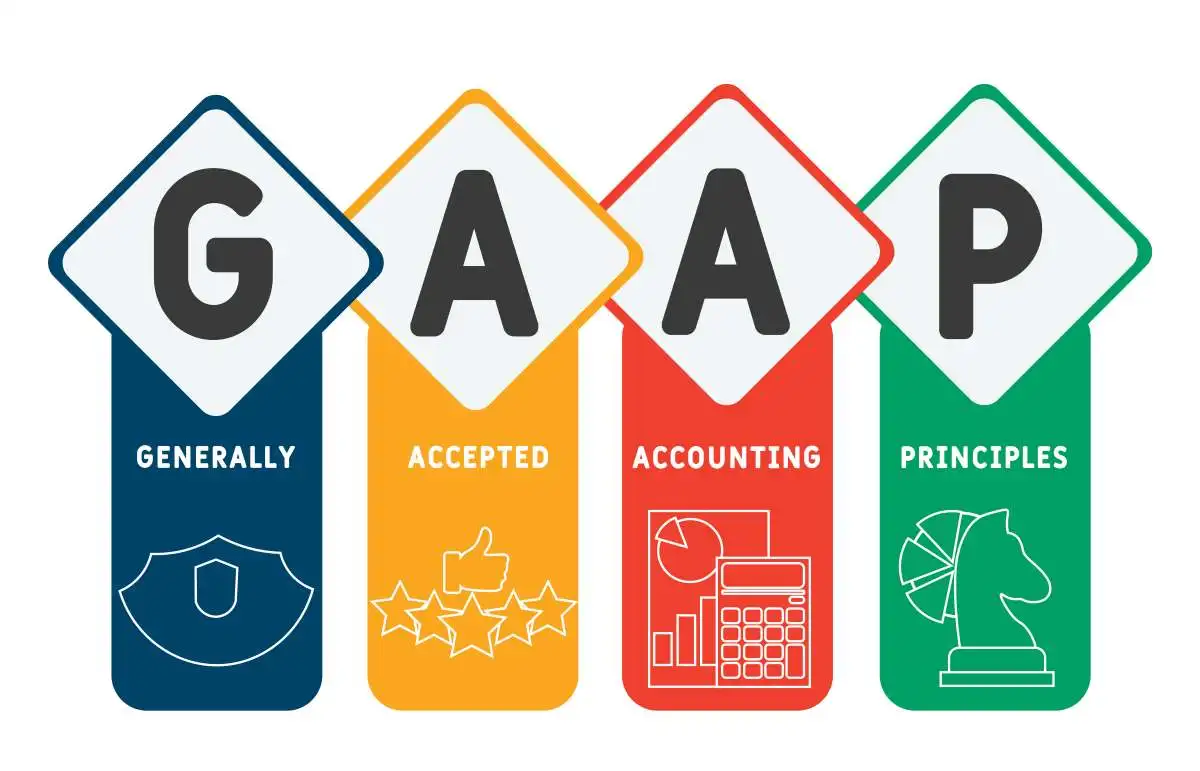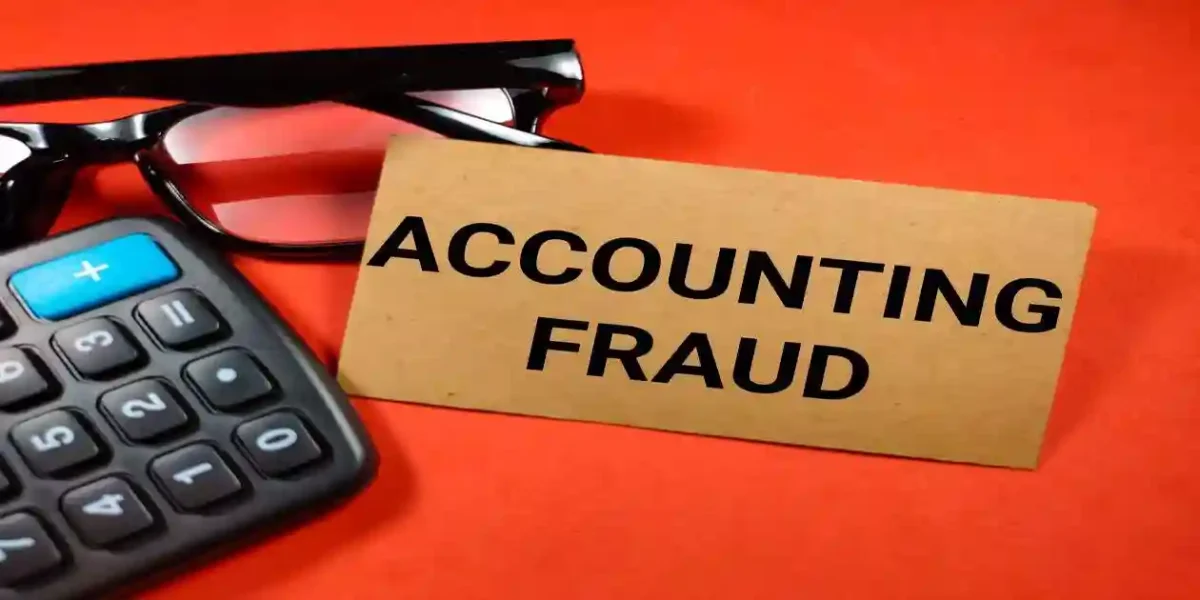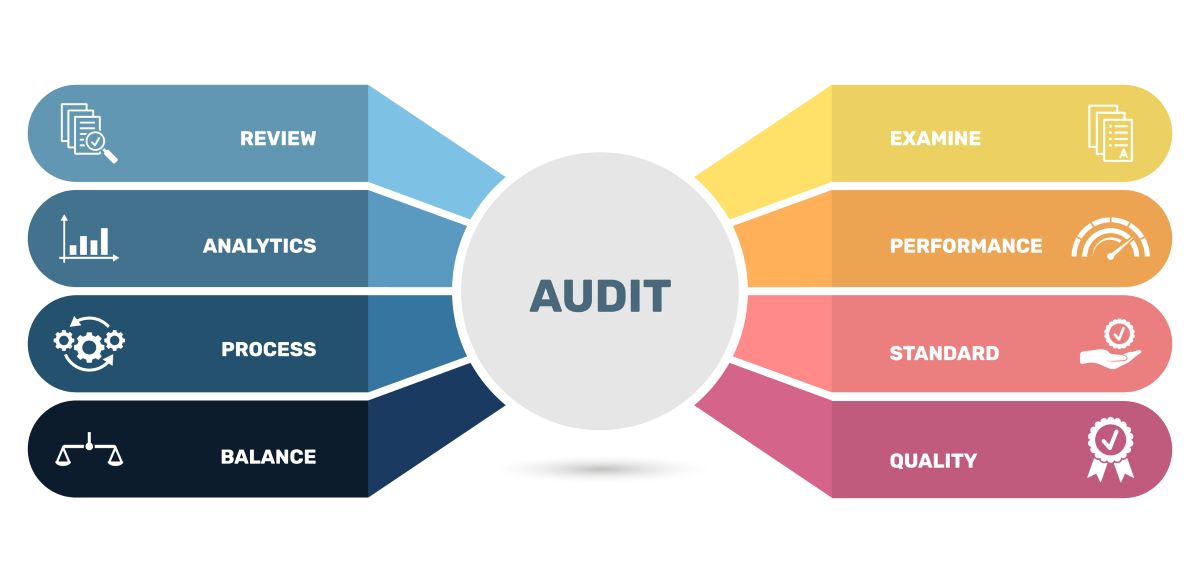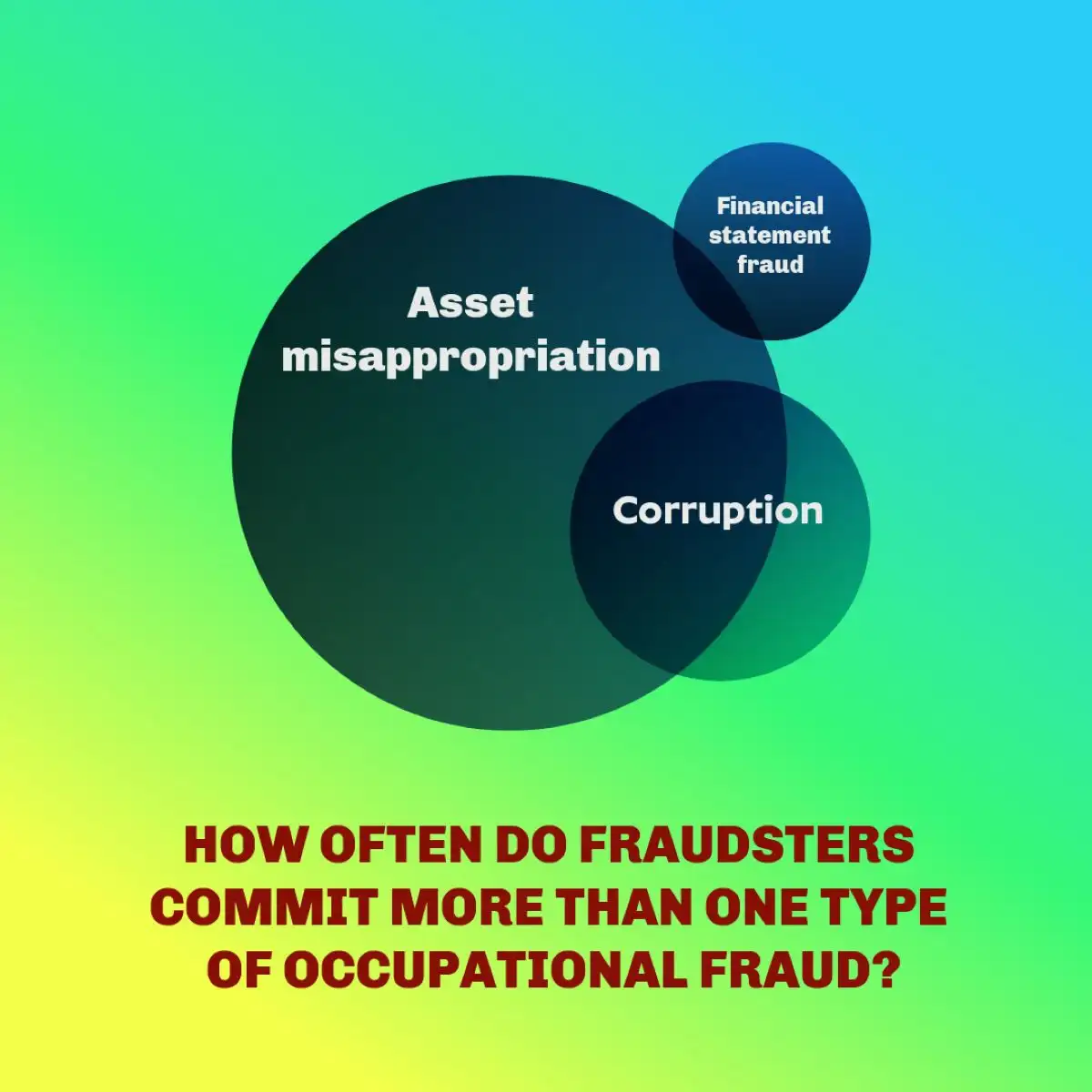Introduction to Misappropriation of Assets Accounting Fraud
Internal Controls that Detect Asset Misappropriation
Specific and advanced internal controls that detect asset misappropriation are tailored to detect asset misappropriation through a variety of ways.
Misappropriation of Assets Accounting Fraud
- A particularly damaging form of accounting fraud where employees or insiders deliberately misappropriate company assets for personal enrichment. This deceptive practice encompasses theft of cash, inventory manipulation, and falsification of records, directly undermining organizational internal controls and financial integrity. The perpetrators often exploit weaknesses in control systems to conceal their activities.
Examples
- Common schemes include sophisticated check tampering operations, complex billing fraud networks that process fictitious invoices, deliberately falsified expense reports designed to obtain improper reimbursements, and systematic theft of physical or intellectual property assets. These activities frequently trigger securities litigation when discovered, especially in publicly traded companies where shareholder value is impacted.
Direct Impact on Organization
- Unlike fraudulent financial reporting that primarily aims to deceive external stakeholders, asset misappropriation accounting fraud creates immediate financial damage by directly depleting organizational resources. This type of fraud erodes operational efficiency, undermines internal controls, and can trigger substantial losses that impact shareholder value. The cumulative effect often leads to reduced profitability and diminished investor confidence.
Key Indicators of Fraud
- Inconsistencies in Revenue Recognition: Unexplained revenue spikes without corresponding cash flow increases or customer base expansion may indicate premature or fictitious revenue recognition. Financial analysts must carefully examine revenue timing, particularly during period-end closings, while evaluating the effectiveness of internal controls over revenue processes.
Complex Financial Instruments
- Sophisticated financial instruments, including derivatives and off-balance-sheet arrangements, can mask an organization’s true financial position and create opportunities for asset misappropriation. Transparent disclosures and robust internal controls become essential safeguards against these risks. Regular audits and monitoring of complex transactions help maintain financial integrity.

How the Scheme is Accomplished
The Act
- The initial fraudulent action typically involves exploiting weaknesses in internal controls to execute unauthorized transactions, such as processing fraudulent checks, manipulating inventory records, or misappropriating company assets. Perpetrators often hold positions of trust that provide access to valuable resources.
The Concealment
- Fraudsters employ sophisticated methods to hide their activities, including creating false documentation, forging signatures, manipulating electronic records, and circumventing internal controls. This concealment phase often involves multiple steps to avoid detection by standard control procedures.
The Conversion
- The final phase involves converting stolen assets into personal benefit, whether through direct cash theft, resale of misappropriated inventory, or misuse of company resources. This stage often leaves subtle traces that can be detected through careful monitoring of internal controls.
Types of Asset Misappropriation
Theft of Cash
Skimming: A sophisticated scheme where incoming cash is intercepted before recording in accounting systems, deliberately circumventing internal controls and making detection extremely challenging. This requires particular attention to cash handling procedures.
Cash Larceny: The theft of recorded cash, which often involves manipulating documentation and exploiting weaknesses in cash management internal controls.
Check Tampering: Complex schemes involving check forgery, alteration, or interception, frequently targeting companies with inadequate payment processing internal controls.
- Fraudulent Disbursements
- Billing Schemes: Sophisticated fraud involving submission of fictitious invoices or personal purchases disguised as business expenses, often exploiting weaknesses in procurement internal controls.
- Payroll Schemes: Complex manipulation of payroll systems through creation of ghost employees or falsification of time records, requiring enhanced payroll processing internal controls.
- Expense Reimbursement Fraud: Systematic submission of inflated or fabricated expense reports, often involving personal expenses misrepresented as business costs. Strong expense monitoring internal controls are essential.
- Register Disbursements: Sophisticated manipulation of point-of-sale systems through false refunds or voids, requiring robust retail transaction internal controls.
- Misuse or Theft of Non-Cash Assets
- Inventory Theft: Systematic misappropriation of physical inventory, often concealed through manipulation of inventory records and exploitation of weak internal controls.
Misuse of Company Assets: Unauthorized personal use of organizational resources, including vehicles, equipment, or supplies, requiring enhanced asset management internal controls.
Intellectual Property (IP) Theft: Misappropriation of valuable confidential information, trade secrets, or proprietary business plans, necessitating strong information security internal controls.
Red Flags of Asset Misappropriation
- Unexplained accounting discrepancies or missing documentation that suggest breakdowns in internal controls
- Unauthorized transactions or irregular journal entries that bypass established control procedures
- Unusual patterns in financial data that indicate potential circumvention of internal conAsset Misappropriation and Internal Controls: A Step-By-Step Essential Guide to Protecting Your Business
- Suspicious employee behavior or lifestyle changes that may signal fraudulent activities
- Consistent override of established control procedures by management or key personnel
- Unexplained variances in inventory levels or cash balances
- Irregular patterns in expense reimbursement claims
- Unusual adjustments to accounting records that bypass normal procedures
Segregation of duties
A critical component of internal controls, proper segregation of duties prevents any single employee from having excessive control over financial processes. This fundamental control mechanism requires dividing key responsibilities among multiple individuals to create a system of checks and balances. For instance, the employee responsible for cash receipts should not also handle bank reconciliations, and those who approve purchases should not process vendor payments. This separation helps prevent and detect fraudulent activities by ensuring that no individual can both perpetrate and conceal improper transactions.
Organizations must carefully evaluate their operational structure to identify critical functions that require separation. Key areas demanding segregation include:
- Authorization of transactions
- Custody of assets
- Recording of transactions
- Reconciliation of accounts
- Review and approval processes
When proper segregation cannot be achieved due to limited staff, compensating controls like increased supervision, mandatory vacations, and regular rotation of duties become essential safeguards against fraud.
Strengthening Internal Controls
Robust internal controls serve as the foundation for preventing asset misappropriation. Organizations should implement comprehensive control policies that include:
- Regular internal audits conducted by independent personnel
- Detailed documentation requirements for all financial transactions
- Strict authorization protocols for accessing sensitive systems and data
- Mandatory dual approval for transactions above specified thresholds
- Regular reconciliation of accounts by independent reviewers
- Comprehensive audit trails for all system activities
- Periodic risk assessments to identify control weaknesses
- Regular employee training on fraud prevention and detection
- Clear policies regarding conflicts of interest and ethical conduct
- Whistleblower protection programs encouraging reporting of suspicious activities
Physical and Digital Access Controls
Modern organizations must maintain stringent access controls across both physical and digital domains:
Physical Controls:
- Restricted access to valuable inventory areas
- Secure storage for sensitive documents
- Video surveillance of critical areas
- Key card access systems
- Regular inventory counts
- Visitor logging and escort requirements
Digital Controls:
- Multi-factor authentication for system access
- Role-based access restrictions
- Regular password changes
- Audit logging of system activities
- Encryption of sensitive data
- Network segmentation
- Regular security assessments
The Devastating Impact of Asset Misappropriation
Asset misappropriation creates multiple layers of damage within organizations:
Direct Financial Impact:
- Immediate loss of cash and physical assets
- Reduced profitability and cash flow
- Increased insurance costs
- Legal and investigation expenses
- Costs of strengthening control systems
- Potential fines and penalties
Operational Impact:
- Disrupted business processes
- Reduced productivity
- Damaged supplier relationships
- Increased administrative burden
- Higher security and monitoring costs
Reputational Damage:
- Lost customer confidence
- Reduced stakeholder trust
- Negative media coverage
- Damaged employee morale
- Impaired ability to attract talent
Advanced Detection Methods
Organizations must employ sophisticated detection techniques:
Accounting Analysis:
- Detailed review of unusual transactions
- Analysis of trend deviations
- Investigation of reconciliation discrepancies
- Examination of journal entry patterns
- Review of margin fluctuations
Transaction Monitoring:
- Real-time analysis of payment patterns
- Identification of duplicate transactions
- Detection of unusual timing or amounts
- Analysis of vendor payment histories
- Review of employee expense patterns
Data Analytics:
- Pattern recognition algorithms
- Anomaly detection systems
- Predictive modeling
- Statistical analysis
- Machine learning applications
Common Financial Statement Impact
Asset misappropriation often leads to financial statement irregularities:
Balance Sheet Effects:
- Understated assets
- Manipulated inventory values
- Incorrect cash balances
- Misstated accounts receivable
- Inaccurate liability reporting
Income Statement Impact:
- Overstated expenses
- Understated revenues
- Incorrect cost allocations
- Manipulated profit margins
- Distorted operating results
These effects can trigger restatements and potential securities litigation, particularly when control weaknesses are identified as contributing factors.
Prevention Through Strong Internal Controls
Effective prevention requires a multi-layered approach:
Policy Framework:
- Clear procedures for all financial processes
- Documented approval requirements
- Regular policy reviews and updates
- Employee acknowledgment procedures
- Consequence management protocols
Monitoring Systems:
- Regular control testing
- Independent oversight
- Continuous monitoring programs
- Exception reporting
- Performance metrics
Training and Awareness:
- Regular fraud awareness training
- Ethics education programs
- Policy communication
- Case study reviews
- Updates on new fraud schemes
By implementing these comprehensive controls and detection methods, organizations can significantly reduce their vulnerability to asset misappropriation while protecting shareholder value and maintaining market confidence.
Incompatible duties represent a critical weakness in internal controls that creates significant fraud risk. These occur when a single employee maintains responsibility for multiple key financial functions that should be separated to prevent fraud. The core functions that require separation include:
Authorization: The power to approve financial transactions and expenditures. This includes approving purchase orders, expense reports, vendor payments, and other financial commitments that impact company assets. Proper authorization controls ensure transactions are legitimate and align with business needs.
Custody: Direct physical control or access to company assets, including cash, inventory, equipment, and other valuable property. Custody also extends to digital assets like bank account access, investment accounts, and payment systems. Strong custody controls prevent unauthorized access and protect assets from misappropriation.
Record-keeping: The ability to enter, modify, or delete transaction records in the accounting system. This encompasses journal entries, ledger updates, and financial statement preparation. Proper record-keeping controls maintain accurate documentation and prevent fraudulent alterations.
Reconciliation: The responsibility for comparing and verifying different sets of records, such as bank statements to internal records, or physical inventory counts to system records. Effective reconciliation serves as a critical detective control to identify discrepancies and potential fraud.
Example: A classic case of incompatible duties occurs when a single employee handles multiple financial functions. For instance, if one person receives customer payments, records those transactions in the accounting system, and performs bank reconciliations, they could easily commit fraud by stealing incoming cash and manipulating records to cover their tracks. This scenario eliminates the checks and balances that proper segregation provides.
Management and oversight
Inadequate supervision creates significant opportunities for asset misappropriation when management fails to properly monitor employee activities and business processes. This risk becomes particularly acute in remote locations or satellite offices where direct oversight is limited. Without proper supervision, fraudulent schemes can persist undetected for extended periods, leading to substantial losses that impact shareholder value.
Ineffective management review represents another critical control weakness that enables fraud. When managers do not thoroughly review transactions, supporting documentation, and account reconciliations, employees can more easily process fraudulent transactions or manipulate records. Regular management review serves as a crucial detective control that helps identify suspicious patterns or unauthorized activities before they result in significant losses.
Management override of controls poses a particularly serious threat to organizational integrity. When senior leaders bypass established internal controls for operational expediency or personal gain, it sends a devastating message throughout the organization that controls are optional. This behavior erodes the control environment and creates an atmosphere where fraud can flourish. Additionally, management override often involves complex schemes that are difficult to detect through normal control procedures.
Poor hiring practices significantly increase fraud risk when organizations fail to conduct thorough background checks and screening procedures for employees who will have access to assets or financial systems. Critical screening elements should include:
- Criminal background checks
- Credit history review
- Employment verification
- Education confirmation
- Professional reference checks
- Drug testing where appropriate
Physical and information safeguards
Inadequate physical controls create direct opportunities for asset misappropriation. Common weaknesses include:
- Unsecured cash storage areas
- Poor inventory warehouse security
- Unrestricted access to equipment and supplies
- Inadequate surveillance systems
- Weak key control procedures
- Poor perimeter security
- Insufficient access restrictions
Weak access controls over information systems and data represent a growing fraud risk in today’s digital environment. Organizations must implement robust controls including:
- Strong password requirements
- Multi-factor authentication
- Role-based access restrictions
- Regular access reviews
- System activity monitoring
- Data encryption
- Network segmentation
Recording and documentation
Poor record keeping severely compromises an organization’s ability to prevent and detect fraud. Inadequate documentation creates gaps in the audit trail that fraudsters can exploit. Critical documentation that must be maintained includes:
- Original invoices and receipts
- Purchase orders and contracts
- Shipping and receiving records
- Employee expense reports
- Journal entry support
- Account reconciliations
- Approval documentation
Lack of independent checks removes a crucial detective control that helps identify fraudulent activity. Regular independent verification should include:
- Bank reconciliations
- Inventory counts
- Asset verifications
- Account reviews
- Transaction testing
- System access audits
- Control assessments
Failure to enforce mandatory vacations eliminates an important fraud detection mechanism. When employees engaging in fraud must take time off, their schemes often become apparent as other workers temporarily assume their duties. Organizations should require:
- Minimum vacation periods
- Cross-training of duties
- Rotation of responsibilities
- Backup personnel assignment
- Transaction review during absences
Technology and automation
Insufficient use of automation increases fraud risk by relying too heavily on manual processes that are more susceptible to manipulation and error. Organizations should leverage technology to:
- Automate transaction processing
- Implement system controls
- Generate exception reports
- Monitor user activity
- Enforce segregation of duties
- Maintain audit trails
- Detect anomalies
Failure to update technology leaves organizations vulnerable to both internal fraud and external threats. Outdated systems often lack:
- Modern security features
- Automated controls
- Audit capabilities
- Integration capabilities
- Detection tools
- Monitoring functions
- Reporting capabilities
Poorly integrated systems create control gaps that fraudsters can exploit. When systems don’t properly communicate, organizations face:
- Duplicate data entry
- Reconciliation challenges
- Limited visibility
- Control weaknesses
- Detection delays
- Reporting issues
- Compliance risks
A poor “tone at the top” fundamentally undermines an organization’s control environment and creates conditions where asset misappropriation can flourish. When senior leadership fails to demonstrate commitment to internal controls and ethical behavior, it erodes organizational integrity and increases fraud risk through multiple mechanisms.
Management override of controls
Rationalizing shortcuts: When executives face intense pressure to achieve aggressive financial targets, they may bypass established internal controls under the pretext of operational efficiency or expedited processing. This behavior sends a devastating message throughout the organization – that controls are optional and can be circumvented when convenient. Employees who witness management overriding controls often interpret this as tacit permission to similarly disregard control procedures, creating a dangerous cascade of control deterioration that increases fraud risk exponentially.
Influencing accounting staff: Senior management can leverage their authority to pressure accounting personnel into processing questionable or fraudulent transactions that circumvent internal controls. This coercion may involve directing staff to record improper journal entries, manipulate account reconciliations, or process unauthorized transactions designed to conceal asset misappropriation. Accounting staff often comply with these directives due to several factors:
- Fear of retaliation or job loss if they refuse
- Misplaced loyalty to their superiors
- Belief that management must have valid business reasons
- Lack of confidence in whistleblower protections
- Pressure to be a “team player”
- Career advancement considerations
- Rationalization that it’s not their responsibility
Hiding theft through authority: Management’s elevated system access privileges and approval authority create opportunities to conceal fraudulent activities through seemingly legitimate transactions. Common concealment techniques include:
- Writing off legitimate receivables to hide misappropriated payments
- Recording fictitious revenue to mask stolen cash
- Creating false vendor payments to funnel funds
- Manipulating reserves to hide shortages
- Adjusting inventory records to cover theft
- Processing improper refunds or credits
- Altering electronic payment records
These schemes prove particularly difficult to detect since they are executed by individuals with extensive system access, approval authority, and intimate knowledge of control weaknesses. The fraudulent transactions often appear routine and properly authorized, allowing the schemes to persist undetected for extended periods.
Normalization of unethical behavior
“They’re doing it too”: Employees carefully observe management’s behavior and take cues regarding what conduct is truly acceptable versus what is merely stated in policy documents. When workers witness executives:
- Falsifying expense reports
- Taking company property for personal use
- Sharing confidential information
- Violating stated policies
- Ignoring control procedures
- Misusing corporate assets
- Engaging in conflicts of interest
They often rationalize their own unethical behavior by pointing to management’s example. This “monkey see, monkey do” effect creates a toxic culture where fraud becomes normalized and internal controls are routinely circumvented.
Rewarding results over ethics: Organizations that singularly focus on achieving financial targets while ignoring how those results are obtained create intense pressure for employees to engage in fraud. When management:
- Demands aggressive growth targets
- Ties compensation to results
- Ignores compliance violations
- Celebrates “win at all costs”
- Dismisses ethical concerns
- Tolerates corner-cutting
- Punishes missed targets
Employees feel compelled to manipulate data, override controls, and commit fraud to avoid negative consequences. This results-at-any-cost mentality effectively dismantles the organization’s control environment.
Erosion of trust and control
Weakened whistleblower protections: Management teams that respond to reported misconduct with:
- Retaliation against reporters
- Dismissal of legitimate concerns
- Failure to investigate claims
- Protection of wrongdoers
- Suppression of information
- Intimidation tactics
- Cover-up attempts
effectively destroy the organization’s ethics reporting mechanisms. Since employee tips represent the most common fraud detection method, a compromised whistleblower program removes a crucial defense against asset misappropriation and accounting fraud.
Reduced morale and loyalty: A toxic corporate culture marked by:
- Unfair treatment of employees
- Lack of accountability
- Ethical compromises
- Poor communication
- Distrust of leadership
- Political infighting
- Favoritism
creates a workforce with reduced organizational commitment and weakened ethical barriers to fraud. Employees who feel mistreated are more likely to rationalize fraudulent behavior as justified payback against the company.
Disregard for monitoring: When management demonstrates indifference toward internal controls through:
- Irregular account reconciliations
- Postponed audits and reviews
- Ignored exception reports
- Delayed investigations
- Cursory supervisory review
- Minimal transaction testing
- Poor documentation
it creates an environment where fraud can flourish undetected. The absence of consistent monitoring activities removes a crucial detective control that helps identify suspicious patterns and anomalies before they result in significant losses.
The Primary Objective of Securities Litigation
Primary Objective: The fundamental purpose of securities litigation is to enforce accountability for fraudulent activities that harm investors and undermine market integrity. These legal proceedings serve as a powerful deterrent by imposing severe financial and reputational consequences on companies and executives who engage in deceptive practices.
Accountability: Securities litigation creates accountability through:
- Financial penalties and damages
- Individual liability for executives
- Mandatory control improvements
- Public disclosure of misconduct
- Reputational consequences
- Industry-wide deterrence
This accountability mechanism helps prevent future fraud by demonstrating that deceptive practices carry serious consequences.
Compensation: Securities litigation provides an avenue for defrauded investors to recover losses through:
- Class action settlements
- Disgorgement of illegal profits
- Restitution payments
- Civil monetary penalties
- Asset recovery
- Prejudgment interest
- Attorney fee awards
These financial remedies help make investors whole while removing the profit motive from fraudulent schemes.
Understanding the Role of Securities Litigation
Securities Litigation Objective: Understanding how securities litigation functions is crucial for:
- Corporate executives and directors
- Compliance professionals
- Internal audit teams
- Legal counsel
- Risk managers
- Board members
- Investors
This knowledge helps organizations implement effective controls and avoid behaviors that could trigger costly litigation.
Companies: For organizations, securities litigation emphasizes the critical importance of:
- Maintaining robust internal controls
- Ensuring accurate financial reporting
- Implementing compliance programs
- Fostering ethical culture
- Protecting whistleblowers
- Conducting thorough investigations
- Providing transparent disclosure
These measures help prevent fraud while demonstrating the company’s commitment to regulatory compliance and shareholder protection.
Investors
For investors, understanding the implications of securities litigation is paramount in safeguarding their investments and contributing to market integrity. Vigilant investors who recognize warning signs of potential accounting fraud and understand the legal framework can significantly reduce their exposure while supporting transparent markets. Through active participation in securities litigation, investors play a crucial role in:
- Deterring future misconduct through financial consequences
- Recovering losses from fraudulent activities
- Encouraging stronger corporate governance
- Promoting market transparency and integrity
- Supporting regulatory enforcement efforts
- Protecting other shareholders’ interests
- Strengthening accountability mechanisms
THE SECURITIES LITIGATION PROCESS
- Filing the Complaint: The securities litigation process begins when a lead plaintiff files a detailed complaint on behalf of similarly affected shareholders. This complaint must specifically outline:
- The alleged fraudulent conduct
- Material misstatements or omissions
- Evidence of scienter (intent to deceive)
- Resulting investor damages
- Connection between fraud and losses
- Class period timeline
- Individual defendant roles
- Motion to Dismiss: Defendants typically challenge securities class action lawsuits through motions to dismiss, arguing:
- Insufficient pleading of fraud claims
- Lack of materiality in statements
- Absence of scienter evidence
- Missing loss causation elements
- Statute of limitations issues
- Jurisdictional challenges
- Technical pleading defects
- Discovery: Upon survival of the motion to dismiss, the discovery phase begins, involving:
- Document collection and review
- Electronic data preservation
- Witness depositions
- Expert testimony
- Financial record analysis
- Email communications review
- Internal control documentation
- Motion for Class Certification: The court evaluates class certification requests based on:
- Numerosity of affected investors
- Common questions of law/fact
- Typicality of lead plaintiff claims
- Adequacy of representation
- Predominance of common issues
- Superiority of class resolution
- Definable class membership
- Summary Judgment and Trial: If not settled, the case may proceed through:
- Summary judgment motions
- Pre-trial preparations
- Jury selection process
- Opening statements
- Witness testimony
- Expert evidence
- Closing arguments
- Settlement Negotiations and Approval: Most securities litigation resolves through settlements requiring:
- Mediator facilitation
- Damage calculations
- Insurance coverage analysis
- Corporate governance reforms
- Distribution methodology
- Notice procedures
- Court approval process
- Class Notice: Court-approved settlement notices must provide:
- Clear settlement terms
- Distribution procedures
- Opt-out rights
- Claim filing deadlines
- Attorney fee information
- Objection procedures
- Contact information
- Final Approval Hearing: The court conducts a fairness hearing to:
- Review settlement terms
- Consider objections
- Evaluate fee requests
- Assess distribution plans
- Confirm notice adequacy
- Grant final approval
- Enter judgment order
- Claims Administration and Distribution: The claims process involves:
- Notice dissemination
- Claim form processing
- Loss calculation verification
- Pro-rata determinations
- Payment distributions
- Tax reporting
- Reconciliation procedures
Prevention strategies
Organizations can implement comprehensive fraud prevention strategies centered around robust internal controls and ethical corporate culture.
Implement strong internal controls: Companies must establish and maintain effective control systems including:
- Strict segregation of duties
- Multi-level transaction approval
- System access restrictions
- Regular account reconciliations
- Exception reporting mechanisms
- Audit trail documentation
- Change management controls
Set an ethical “tone at the top”: Leadership must demonstrate unwavering commitment to:
- Ethical decision-making
- Transparent communication
- Policy compliance
- Control adherence
- Whistleblower protection
- Investigation support
- Accountability enforcement
Perform regular audits: Organizations should conduct comprehensive reviews through:
- Independent external audits
- Internal audit programs
- Control effectiveness testing
- Compliance assessments
- Process evaluations
- Risk-based monitoring
- Fraud detection procedures
Establish a whistleblower program: Effective reporting mechanisms require:
- Anonymous reporting channels
- Non-retaliation policies
- Timely investigations
- Reporter protection
- Clear procedures
- Regular training
- Program monitoring
Limit performance-based bonuses: Compensation structures should:
- Balance short/long-term goals
- Include qualitative metrics
- Consider control compliance
- Avoid excessive pressure
- Promote ethical conduct
- Prevent corner-cutting
- Support sustainability

Maintaining Financial Integrity
Robust Internal Controls: Organizations must implement and maintain comprehensive internal controls including:
- Documented policies/procedures
- Clear approval authorities
- System access controls
- Reconciliation requirements
- Exception monitoring
- Change management
- Audit trails
- Ensures Compliance: Organizations must implement rigorous measures to ensure their financial statements maintain complete accuracy and full compliance with applicable accounting standards and regulatory requirements. This involves establishing comprehensive internal controls and monitoring systems designed to detect and prevent material misstatements or omissions. Companies must develop detailed documentation procedures, implement multi-level review processes, and maintain clear audit trails that demonstrate adherence to established accounting principles and reporting standards. Regular assessments of control effectiveness help identify potential weaknesses before they result in reporting deficiencies that could trigger securities litigation.
- Motivation: The implementation of thorough compliance programs requires regular internal and external audits conducted by qualified professionals who can identify discrepancies, irregularities, or control weaknesses in financial reporting processes. These audit procedures must systematically evaluate transaction documentation, accounting estimates, and reporting methodologies to ensure they align with regulatory requirements and professional standards. Internal audit teams should maintain independence while coordinating with external auditors to provide comprehensive oversight of financial reporting processes and internal controls.
REPUTATIONAL AND FINANCIAL CONSEQUENCES OF FRAUD
The devastating impact of financial statement fraud extends far beyond immediate monetary losses, creating long-lasting damage to organizational value, stakeholder trust, and market confidence. Companies engaging in accounting fraud face severe multi-dimensional consequences that can permanently impair their ability to operate effectively.
Impact Assessment of Financial Statement Fraud
| Impact Category | Measurement | Severity |
| Stock Value Loss | 12.3-20.6% average decline | High |
| Reputational Damage | Up to 100x direct financial loss | Severe |
| Employee Impact | 50% loss in cumulative wages | Severe |
| Legal Penalties | $750M+ in major cases | High |
| Bankruptcy Risk | 3x higher than non-fraud firms | High |
| Market Recovery | Years to decades, if ever | Variable |
| Customer Trust | Immediate and often permanent loss | Severe |
| Investment Access | Permanently impaired in many cases | High |
The table above illustrates the catastrophic consequences that typically follow the discovery of fraudulent financial reporting. Stock value deterioration represents just the beginning of a complex cascade of negative outcomes that can ultimately lead to organizational failure. The reputational damage often exceeds direct financial losses by orders of magnitude, as stakeholders lose confidence in management’s integrity and the reliability of corporate disclosures.
Employee impact proves particularly severe, with workers often experiencing substantial wage losses through reduced hours, eliminated positions, or complete job loss following fraud discovery. Legal penalties frequently reach hundreds of millions of dollars in major cases, while bankruptcy risk triples compared to companies without fraud incidents. Market recovery, when possible, typically requires years or decades of rebuilding trust and demonstrating renewed commitment to transparency and ethical conduct.
Customer trust, once lost through fraudulent activities, proves extremely difficult to regain. Many organizations never fully recover their market position after serious fraud incidents come to light. Access to investment capital becomes permanently impaired in numerous cases as institutional investors implement strict exclusion policies for companies with histories of accounting fraud.
Contact Timothy L. Miles Today About a MoonLake Class Action Lawsuit
The most important thing you need to know is you can call me at no charge if you wish to serve as lead plaintiff of the MoonLake class action lawsuit, or just have general questions about you rights as a shareholder, please contact attorney Timothy L. Miles of the Law Offices of Timothy L. Miles, at no cost, by calling 855/846-6529 or via e-mail at [email protected]. (24/7/365).
Timothy L. Miles, Esq.
Law Offices of Timothy L. Miles
Tapestry at Brentwood Town Center
300 Centerview Dr. #247
Mailbox #1091
Brentwood,TN 37027
Phone: (855) Tim-MLaw (855-846-6529)
Email: [email protected]
Website: www.classactionlawyertn.com
Facebook Linkedin Pinterest youtube
Visit Our Extensive Investor Hub: Learning for Informed Investors







